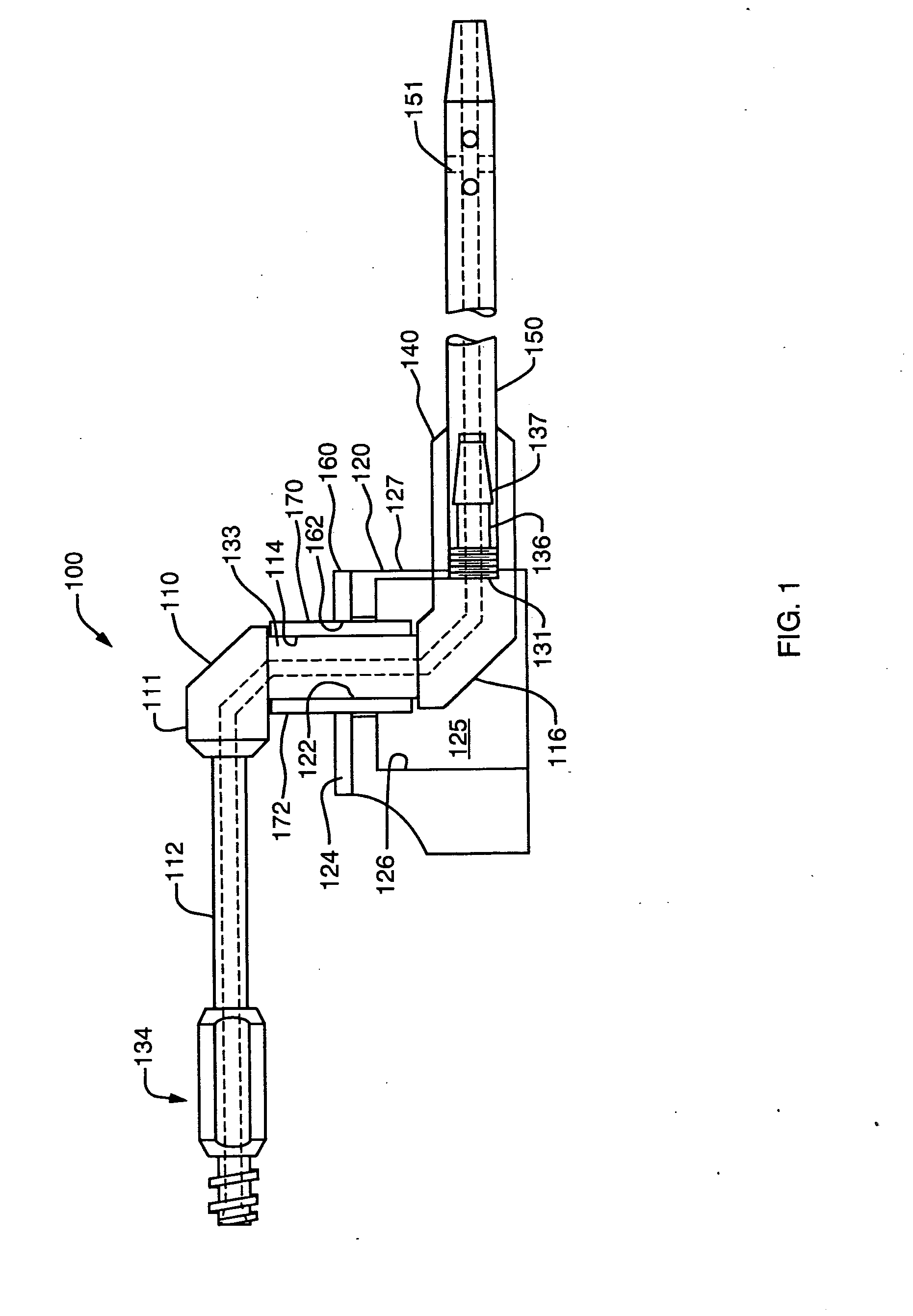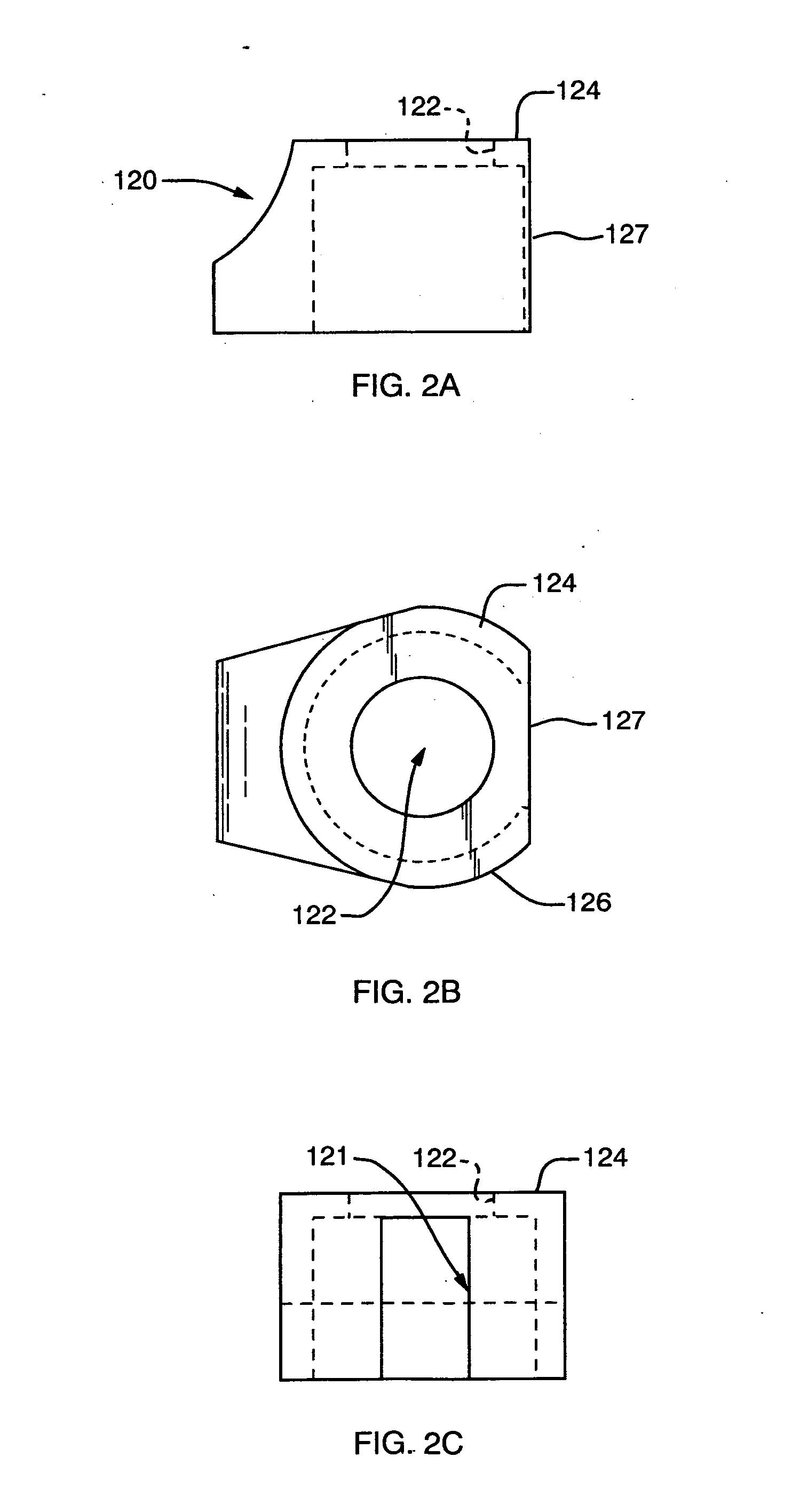Medical device with adjustable tissue ingrowth cuff
a technology of ingrowth cuff and medical device, which is applied in the direction of catheters, peritoneal dialysis, needles infusion, etc., can solve the problems of patient progressive loss of other conventional long-term vascular access options, two catheterization techniques that are significantly different in complexity and degree of invasiveness
- Summary
- Abstract
- Description
- Claims
- Application Information
AI Technical Summary
Benefits of technology
Problems solved by technology
Method used
Image
Examples
Embodiment Construction
[0059]A first representative embodiment of a composite adjustable epidermal tissue ingrowth cuff assembly according to the present invention is illustrated in FIGS. 1-7. FIG. 1 is a schematic partial-sectional view of the complete cuff / conduit / catheter assembly 100 of the first embodiment of this invention. In FIG. 1, elements 120, 140, 160, and 170 are sectioned to show internal assembly details. As seen in FIG. 1, cuff / conduit / catheter assemblies according to this embodiment of the invention comprise in combination a cuff assembly, a conduit assembly, and a catheter portion, each comprising several cooperating elements as described below. A cuff base or hub component 120, shown in FIGS. 1 and 2 as a generally cylindrical shell or housing member having at least one and preferably two substantially flat external faces, or wall portions each having a substantially flat face thereon, is designed to be placed subcutaneously in a patient. The flat, generally circular end face 124 of bas...
PUM
 Login to View More
Login to View More Abstract
Description
Claims
Application Information
 Login to View More
Login to View More - R&D
- Intellectual Property
- Life Sciences
- Materials
- Tech Scout
- Unparalleled Data Quality
- Higher Quality Content
- 60% Fewer Hallucinations
Browse by: Latest US Patents, China's latest patents, Technical Efficacy Thesaurus, Application Domain, Technology Topic, Popular Technical Reports.
© 2025 PatSnap. All rights reserved.Legal|Privacy policy|Modern Slavery Act Transparency Statement|Sitemap|About US| Contact US: help@patsnap.com



